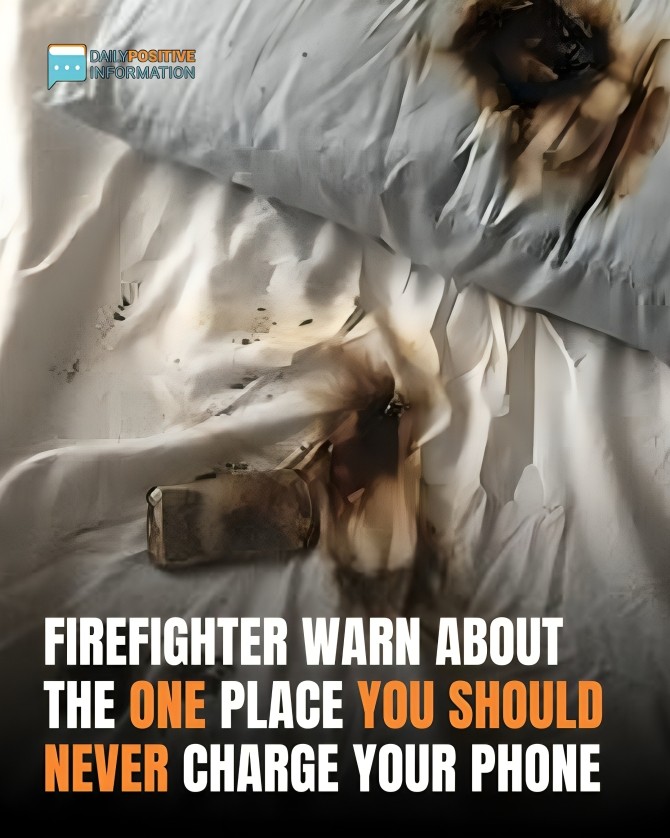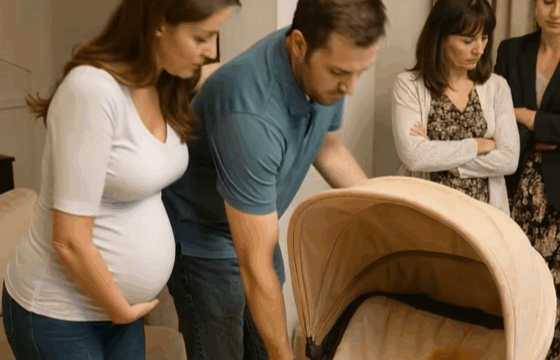Every night, countless people plug in their iPhones and drift off to sleep, completely unaware that a simple charging habit could be putting their entire home at risk. Firefighters in the UK have issued urgent warnings about a common but dangerous routine: charging your iPhone under your pillow.

While it might seem like a harmless convenience, this small act has led to an alarming number of household fires. Clean Air UK, a major authority in fire safety, has identified this behavior as one of the top fire hazards in British homes. The issue stems from a dangerous combination of heat-trapping bedding materials and the volatile nature of lithium-ion batteries, which are used in most smartphones, tablets, and laptops. Firefighter Mark Sutherland has reported that an increasing number of fires are starting when phones overheat while being charged under pillows or blankets. The problem is that when heat builds up with no way to escape, the battery can overheat, expand, and even explode. By the time anyone notices smoke or feels heat, it’s often too late—the fire has already begun to spread.
This is not a theoretical concern. In November 2022, a family in Buckinghamshire was jolted awake by a fire started by a phone charger left on the bed overnight. The bedding ignited quickly, and the fire caused severe damage before firefighters could contain it. What makes these situations especially dangerous is the speed at which lithium-ion battery fires can ignite and escalate. These types of fires can reach over 1100°F (600°C) within minutes, easily sparking a blaze if nearby items are flammable. And if it happens while you’re asleep, your response time is dangerously limited. The London Fire Brigade has reported that over half of accidental house fires now originate from electrical issues, with overnight charging being one of the biggest contributors. But it’s not just where you charge your phone—it’s also how and with what. For example, using cheap knock-off chargers is another dangerous mistake.
These counterfeit accessories might save money upfront but often lack essential safety features that prevent overheating and electrical short circuits. Research from Electrical Safety First revealed that 98% of fake Apple chargers fail basic safety checks. Overloading power outlets is another fire risk many overlook. Plugging too many devices into one socket or extension strip can cause the system to overheat and spark. Firefighters advise following the “one plug per socket” rule and suggest using surge-protected extension cords when necessary. Leaving devices plugged in all night, particularly with low-quality chargers, poses additional danger. Some chargers don’t shut off when the device is fully charged, allowing unnecessary heat to build up. Unplugging your device once it’s fully charged is a simple way to prevent this. Charging your phone on soft surfaces like blankets, couches, or carpets also poses serious risks.
These surfaces trap heat and block airflow, increasing the chance of overheating. Experts recommend always charging on firm, flat, non-flammable surfaces like a nightstand or desk. Frayed or damaged charging cables are another major hazard. Exposed wires can easily short-circuit, and if they come into contact with something flammable—such as curtains or bed sheets—a fire can ignite in seconds. Damaged cables should be replaced immediately, no matter how minor the wear may seem. To stay safe, fire experts at Clean Air UK recommend a few straightforward precautions: charge your devices on hard, stable surfaces like countertops or wooden tables, never under pillows or on beds; use chargers and cables from the device’s original manufacturer or from certified third-party vendors with safety markings like CE or UKCA; unplug your phone when it’s fully charged and avoid charging it overnight unless absolutely necessary; pay attention to warning signs like overheating, strange buzzing, or burning smells and stop using any charger showing those symptoms; and install smoke detectors near charging areas, especially in bedrooms, to provide early warning in case of an emergency. Electrical fires due to improper charging are on the rise, but they are completely avoidable. By adopting safer habits—such as using certified chargers, unplugging once charged, and keeping devices off soft surfaces—you can greatly reduce your home’s fire risk. As a spokesperson from Clean Air UK put it, many people don’t realize the danger of charging their phone improperly. Something as routine as using a counterfeit charger or placing a device on a pillow can lead to devastating consequences. Fire prevention doesn’t have to be complicated—it begins with smart, simple choices. So tonight, before you plug in your phone, take a moment to ask yourself: is it in a safe place? That small decision could be the difference between a restful night and a disaster waiting to happen.





